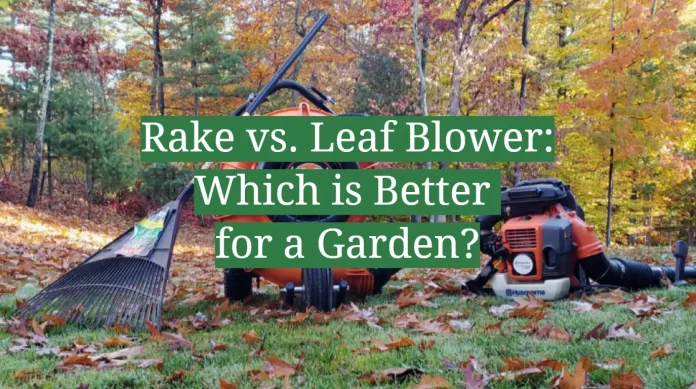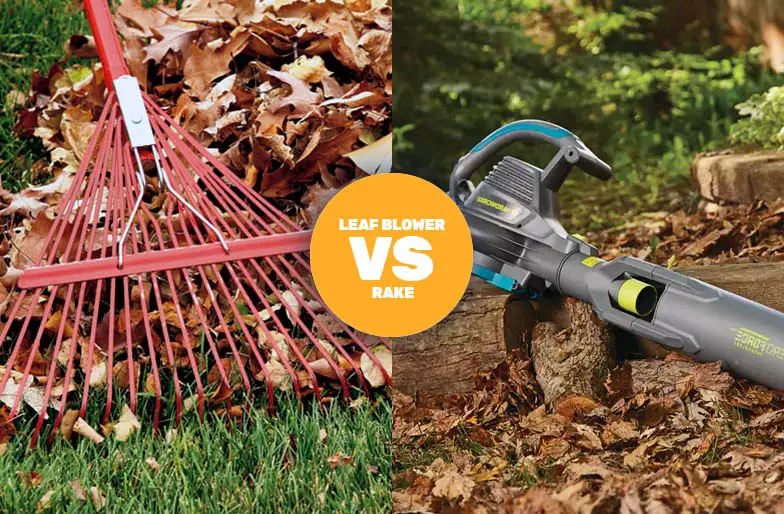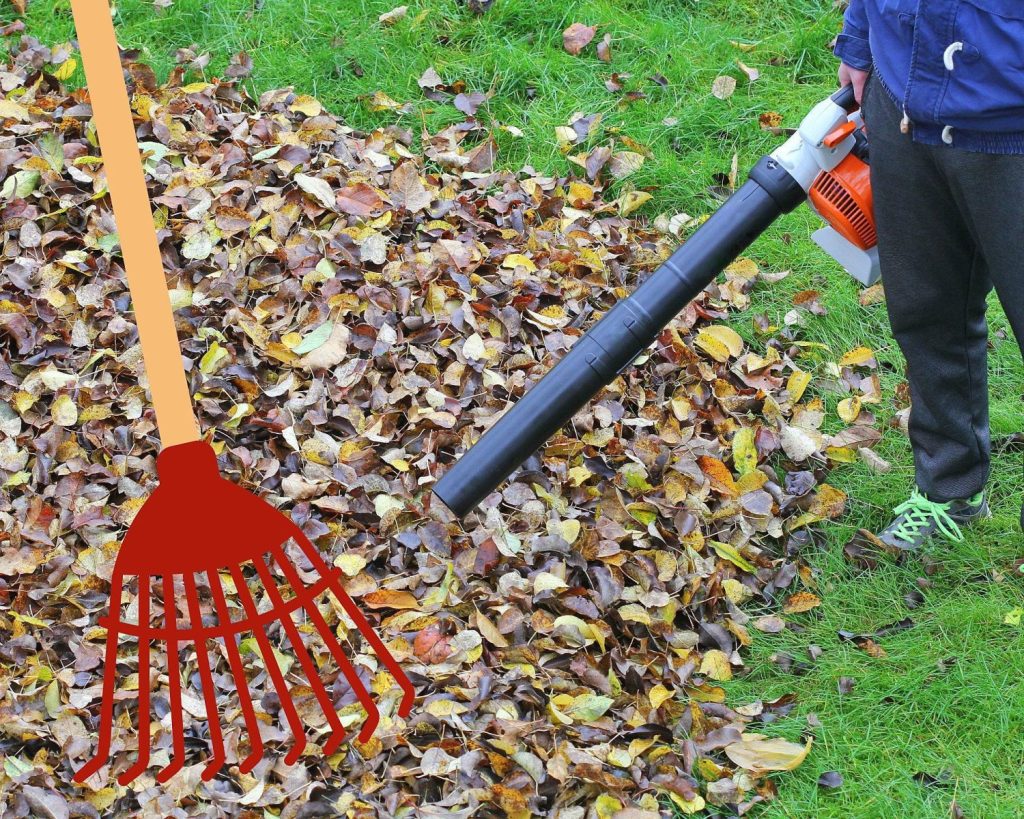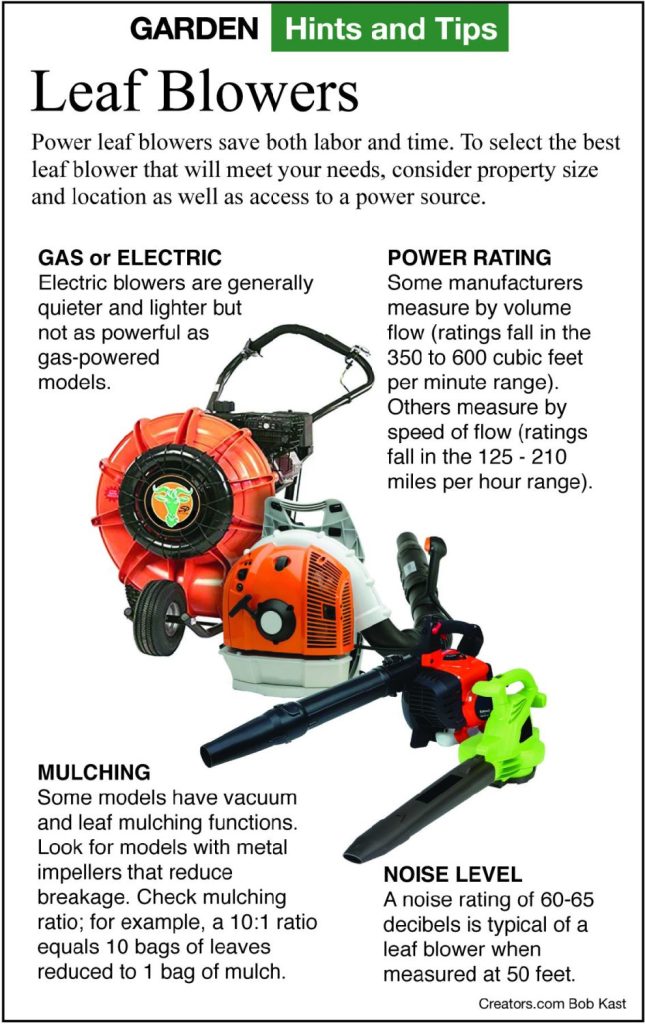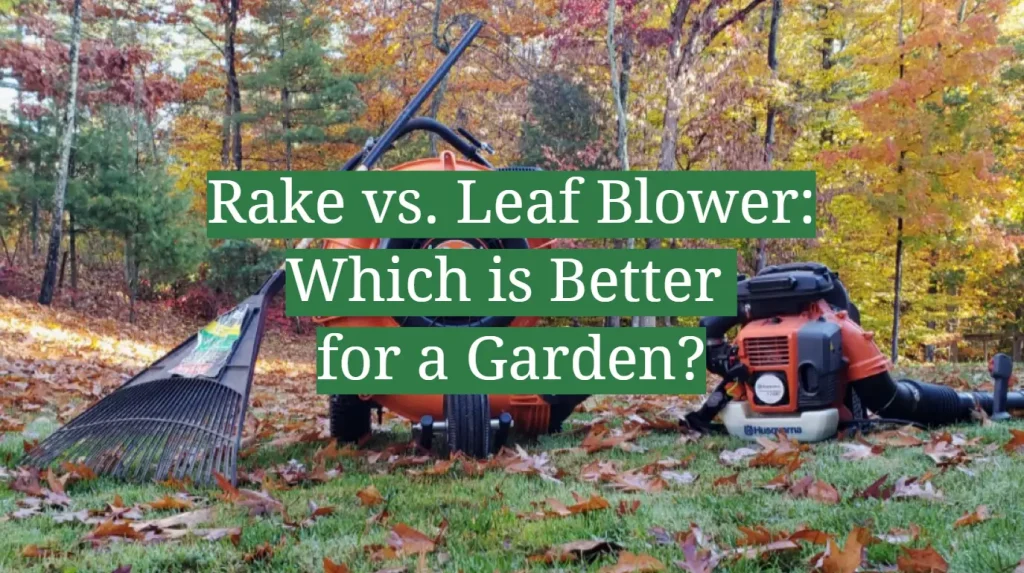When tackling the annual leaf cleanup, you might find yourself torn between the traditional raking method and the modern convenience of using a blower.
Both options have pros and cons, but which is truly better? In this article, we will look closer at the benefits and drawbacks of raking leaves versus using a blower so you can make an informed decision that suits your needs and preferences.
1. Efficiency
1.1 Raking Efficiency
Regarding Efficiency, raking leaves may not be the most efficient method. Raking requires manual labor and can be time-consuming, especially if you have a large yard with plenty of leaves to clear. However, raking has its advantages.
It allows for a more thorough cleanup, as you can manually collect and remove the leaves from your yard. This can be particularly useful if you have a garden or flower bed that needs protection from leaves smothering the plants.
1.2 Blower Efficiency
Using a blower can significantly increase Efficiency in leaf removal. A blower allows you to quickly and easily move leaves into a pile or direct them to a specific area, reducing the time and effort required compared to raking.
Blowers come in different models and sizes, making finding one that suits your needs more leisurely. Some blowers even have a mulching function, which can save time by shredding the leaves and depositing them in a bag or compost pile.
2. Time Efficiency
2.1 Raking Time
Raking leaves can be a time-consuming task, especially if you have a large yard or a high volume of leaves to deal with.
The process of manually gathering and removing leaves from your yard can take several hours or even days, depending on the size of the area and the density of the leaves. However, if you enjoy being outdoors and view raking as a form of exercise or relaxation, the Time spent raking may not concern you.
2.2 Blower Time
Using a blower for leaf removal can be much quicker compared to raking. With a blower, you can quickly gather leaves into a pile or direct them to a specific area, saving you valuable Time.
The amount of time saved will depend on the size and power of the blower and the density of the leaf coverage. However, it is essential to note that using a blower may require additional cleaning time, as the leaves must be collected and disposed of separately.
3. Effectiveness
3.1 Raking Effectiveness
Raking leaves can effectively clear your yard, especially if you have a relatively small area or prefer a more detailed and thorough cleanup. Raking allows you to manually collect leaves, ensuring that the yard is free of any leaf debris.
Additionally, raking allows you to inspect your yard more closely and address any other issues that the leaves may have hidden. This can include identifying and addressing any damage or issues with your lawn or landscaping.
3.2 Blower Effectiveness
Using a blower can also be an effective method of clearing leaves from your yard. Blowers are designed to efficiently move leaves into a pile or direct them to a desired location.
While blowers may not provide the same level of detail and thoroughness as raking, they can effectively remove a large volume of leaves in a relatively short amount of Time. However, it is essential to note that blowers may not be as effective when dealing with wet or heavy leaves, as they may be more challenging to move.
4. Environmental Impact
4.1 Raking Environmental Impact
Raking leaves has a minimal environmental impact. It is a manual method that does not rely on power or fuel consumption. The only impact may be the physical exertion and the potential strain on your body.
Raking also allows you to collect and dispose of the leaves in an environmentally friendly manner, such as composting or using them as mulch in your garden. This can help reduce waste and create a healthier and more sustainable environment.
4.2 Blower Environmental Impact
Using a blower can have a more significant environmental impact compared to raking. Most blowers are powered by electricity or gas, with an associated carbon footprint. Gas-powered blowers emit pollutants into the air, contributing to air pollution and greenhouse gas emissions.
Electric blowers may be more environmentally friendly, but they still require electricity, which may come from non-renewable sources. It is essential to consider the environmental impact of using a blower and choose a more eco-friendly option if possible.
5. Cost
5.1 Raking Cost
Raking leaves is a cost-effective method of leaf removal. The only Cost involved is the initial investment in a rake, which can be relatively inexpensive.
Rakes are durable and can last for many years with proper care. Also, raking requires no ongoing expenses, such as fuel or electricity costs. This makes raking a budget-friendly option for leaf removal.
5.2 Blower Cost
Using a blower for leaf removal can have associated costs. The initial investment in a blower can range from relatively inexpensive to more expensive, depending on the type and model.
Gas-powered blowers may require ongoing costs for fuel, while electric blowers may have electricity costs. Additionally, blowers may require maintenance and replacement parts over time, adding to the overall Cost. It is essential to consider the long-term costs of using a blower when making your decision.
6. Physical Exertion
6.1 Raking Physical Exertion
Raking leaves can be physically demanding, especially if you have a large yard or many leaves to clear. The repetitive motion of raking can strain your muscles and joints, particularly in your back, shoulders, and arms.
This physical exertion can be viewed as a form of exercise, providing a workout for your muscles and potentially benefiting your overall fitness. However, listening to your body and taking breaks as needed is essential to prevent overexertion or injury.
6.2 Blower Physical Exertion
Using a blower requires less physical exertion compared to raking. Instead of manually gathering and removing leaves, you simply operate the blower to direct the leaves as desired.
This can be less physically demanding, making it a suitable option for individuals with physical limitations or health conditions that prevent them from engaging in strenuous activities. However, practicing proper body mechanics and not overexerting yourself when using a blower is still essential.
7. Versatility
7.1 Raking Versatility
Raking leaves is a versatile method of leaf removal. With a rake, you can gather and remove leaves and perform other tasks.
Rakes can be used for tasks such as leveling soil, spreading mulch, or grooming lawns. They are a multipurpose tool that can be helpful for various yard maintenance activities beyond just leaf removal.
7.2 Blower Versatility
Blowers offer limited Versatility compared to rakes. Their primary purpose is to move leaves and debris.
While blowers can be helpful for other tasks, such as clearing grass clippings or removing light snow, their functionality focuses on leaf removal. A rake may be a more versatile option if you are looking for a tool that can serve multiple purposes.
8. Noise Pollution
8.1 Raking Noise Pollution
Raking leaves does not contribute to noise pollution. It is a quiet and peaceful method of leaf removal that allows you to enjoy the sounds of nature as you work.
This can be particularly appealing if you live in a residential area where noise regulations or neighbors may be concerned. Raking allows for a serene and quiet experience, making it a suitable choice for those who prefer a more tranquil environment.
8.2 Blower Noise Pollution
Using a blower can generate significant noise, particularly gas-powered blowers. The high-speed motor and air movement produce loud vibrations and noise, which can be disruptive to both the user and those around them.
Electric blowers tend to be quieter but still produce a certain noise level. It is important to consider noise regulations and the comfort of your neighbors and yourself when choosing between raking and using a blower.
9. Maintenance
9.1 Raking Maintenance
Rakes require minimal Maintenance. They are typically made from durable materials that can withstand regular use. However, caring for your rake correctly is essential to ensure its longevity.
After each use, clean off any debris or dirt that may have accumulated on the rake. Store it in a dry and clean area to prevent rust or damage. With proper care, a rake can last for many years, making it a low-maintenance option for leaf removal.
9.2 Blower Maintenance
Blowers may require more Maintenance compared to rakes. Gas-powered blowers require regular maintenance, such as fuel and oil changes, spark plug replacements, and air filter cleanings.
Electric blowers may have fewer maintenance requirements but should still be adequately cared for. It is essential to follow the manufacturer’s instructions for Maintenance and perform regular checks to ensure the blower is functioning optimally. Additionally, be aware of any warranty or repair services available to you.
10. Safety
10.1 Raking Safety
Raking leaves is generally a safe activity that poses minimal risk. However, practicing proper body mechanics and ergonomics when raking is important to prevent strain or injury.
Ensure that your rake is the correct length for your height to avoid bending or stooping excessively. Take regular breaks to rest and stretch your muscles to prevent overexertion. If you have any medical conditions or limitations, consult a healthcare professional before engaging in raking or any other physically demanding activity.
10.2 Blower Safety
Using a blower requires certain precautions to ensure Safety. When operating a blower, wear appropriate protective gear, such as goggles and ear protection, to protect your eyes and ears from debris and noise.
Be cautious of the airflow and avoid pointing the blower toward people, animals, or fragile objects. Follow the manufacturer’s instructions for safe operation and only use the blower in suitable weather conditions. It is essential to prioritize Safety and be aware of potential hazards when using a blower.
In conclusion, whether it is better to rake leaves or use a blower depends on factors such as Efficiency, Time, Effectiveness, environmental impact, Cost, physical exertion, Versatility, noise pollution, Maintenance, and Safety.
Raking leaves may be more time-consuming and physically demanding, but it offers a thorough cleanup with minimal environmental impact and Cost.
On the other hand, using a blower can save Time and physical exertion, but it may have a more significant environmental impact and associated costs. Consider your specific needs and preferences when deciding, and remember to prioritize Safety and care for the environment.

